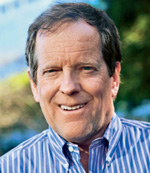sierraclub.org - sierra magazine - november/december 2009 - create: tear down the fences


Create | The Politics of Tomorrow
By Carl Pope

John Muir had it easy. His America had enormous swaths of unfragmented wildlands. If protected from grazing, logging, and mining, Muir's beloved forests and their creatures were pretty much guaranteed to flourish. All he had to do was persuade Teddy Roosevelt to create some national parks.
Now, as the stable climate that sustains both our civilization and our wild heritage begins to unravel, things are much tougher. Yellowstone's grizzlies, for example, feast on whitebark pine nuts. When the nuts are scarce, bears move to lower elevations, where they encounter humans and fare badly. Last year at least 37 bears were killed by people in the Yellowstone region.
Warmer winters and drier summers mean more insect infestations and tree diseases, fewer whitebark pine nuts, and--unless they can find other habitat--fewer bears. To survive, grizzlies in the northern Rockies must move as the climate changes, but with human settlements and highways laced across the region, that migration will be a challenge.
Or take the plight of the bull trout in the Pacific Northwest. The fish need cold water, so the southernmost populations are at risk. The fish could move to more northerly streams, but dams block their way. Are we ready to consider aggressive efforts to identify dams to take down?
In south Louisiana, the wetlands that support Gulf fisheries and buffer coastal communities from hurricanes are shrinking as oceans warm and sea levels rise. To minimize the damage, those wetlands need to be replenished with silt, most of which is held back by dams on the Missouri. The Army Corps of Engineers channels the rest into deep water to facilitate navigation, rather than allowing it to spread out and protect the state's diminishing southern margins.
While biologists wrestled with these issues, policymakers during the George W. Bush years remained in denial. Now that the Obama administration has restored science to its proper place, finding ways to make our wild habitats resilient in the face of a changing climate is finally on the agenda.
Ecosystems can withstand the climate transition now under way only if we drastically reduce the other stresses caused by human activity--not just the same grazing, logging, and mining that bedeviled Muir, but also the introduction of exotic species and even high-impact recreation. And if nature is going to do its job, humans are going to have to live within natural landscapes, not sprawl across them.
The policy response to these challenges is beginning to take form. This spring, Representatives Ron Kind (D-Wis.) and Walter Jones (R-N.C.) introduced America's Wildlife Heritage Act, which would make protecting wildlife a major focus of how our public lands are managed. "Unfortunately, in recent years we have seen an increasing emphasis on extractive uses to the detriment of wildlife species," said Kind. His bill would require federal land managers to identify 20 "focal species" in each ecosystem and to make sure that human activities in the areas do not harm those populations.
Also this spring, Arizona representative Raul Grijalva (D) introduced the Climate Change Safeguards for Natural Resources Conservation Act, which would create wildlife corridors to lessen the impact of climate change, a concept endorsed by the Western Governors' Association.
John Muir's 20th-century challenge was to limit the intrusion of commercial activities into the last refuges of wilderness. He assumed that setting aside protected areas would do the job. Today we face a much greater task: providing enough space for natural systems to serve as our first line of defense against the ravages of an unstable climate.
Natural systems are resilient and powerful and have survived many changes in the earth's climate. What they need to operate, above all, is space, and for 200 years humans have gone to great lengths to fence nature in. To preserve our fellow species in this troubled era, it's time to tear down those fences.
Carl Pope is the executive director of the Sierra Club. E-mail carl.pope@sierraclub.org.
Photo by Kira Stackhouse.